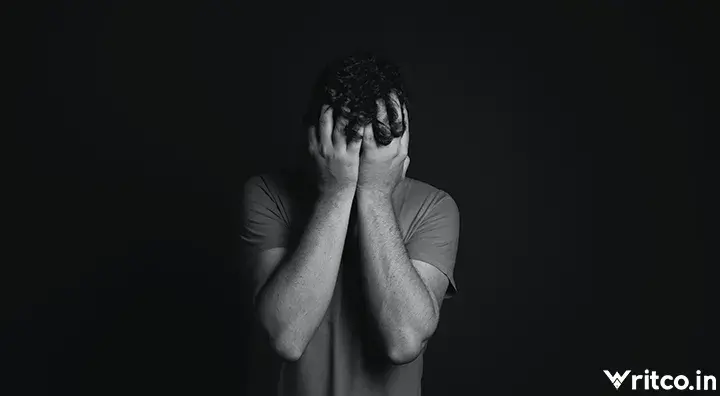26/11 Attacks Bombay 2008
The 2008 Mumbai attacks[10] (also referred to as 26/11)[11][a] were a series of terrorist attacks that took place in November 2008, when 10 members of Lashkar-e-Taiba, an extremist Islamist terrorist organisation based in Pakistan, carried out 12 coordinated shooting and bombing attacks lasting four days across Mumbai.[12][13][14] The attacks, which drew widespread global condemnation, began on Wednesday 26 November and lasted until Saturday 29 November 2008. At least 174 people died, including 9 attackers, and more than 300 were wounded.[2][15]
2008 Mumbai attacks
Bombaymapconfimed attacks.png
Locations of the 2008 Mumbai attacks
Location
Mumbai, India
Leopold Café
Chhatrapati Shivaji Maharaj Terminus
The Taj Mahal Palace Hotel
Oberoi Trident
Cama Hospital
Nariman House
Coordinates
18.922125°N 72.832564°E
Date
26 November 2008 – 29 November 2008
21:30 (26/11) – 08:00 (29/11) (IST, UTC+05:30)
Attack type
Bombings, shootings, hostage crisis,[1] siege
Weapons
AK-47, RDX, IEDs, grenades
Deaths
Approximately 166, in addition to 9 attackers[2]
Injured
300+[2]
Victims
See casualty list for complete list
Perpetrators
Zakiur Rehman Lakhvi[3][4] and Lashkar-e-Taiba[5][6][7]
No. of participants
10
Defenders
National Security Guards[8][9]
MARCOS
Mumbai Police
Indian ATS
Mumbai Fire Brigade
Eight of the attacks occurred in South Mumbai at Chhatrapati Shivaji Terminus, Mumbai Chabad House,[16] The Oberoi Trident,[17] The Taj Palace & Tower,[17] Leopold Cafe, Cama Hospital,[17] The Nariman House,[18] the Metro Cinema,[19] and in a lane behind the Times of India building and St. Xavier's College.[17] There was also an explosion at Mazagaon, in Mumbai's port area, and in a taxi at Vile Parle.[20] By the early morning of 28 November, all sites except for the Taj Hotel had been secured by the Mumbai Police and security forces. On 29 November, India's National Security Guards (NSG) conducted Operation Black Tornado to flush out the remaining attackers; it culminated in the death of the last remaining attackers at the Taj Hotel and ended the attacks.[21]
Pakistan condemned the attacks.[22][23] Ajmal Kasab,[24] the sole surviving attacker, disclosed that the attackers were members of the terrorist group Lashkar-e-Taiba,[25] among others.[26] The Government of India stated that the attackers came from Pakistan, and their controllers were in Pakistan.[27] Pakistan later confirmed that the sole surviving perpetrator of the attacks was a Pakistani citizen.[28] On 9 April 2015, the foremost ringleader of the attacks, Zakiur Rehman Lakhvi, was released on bail and disappeared. In 2018, former Pakistani prime minister Nawaz Sharif suggested that the Pakistani government played a role in the 2008 Mumbai attack.[29There had been many terrorist attacks in Mumbai since the 13 coordinated bomb explosions that killed 257 people and injured 700 on 12 March 1993.[30] The 1993 attacks were carried out in revenge for earlier religious riots that killed many Muslims.[31]
On 6 December 2002, a blast in a BEST bus near Ghatkopar station killed two people and injured 28.[32] The bombing occurred on the 10th anniversary of the demolition of the Babri Mosque in Ayodhya.[33] A bicycle bomb exploded near the Vile Parle...
2008 Mumbai attacks
Bombaymapconfimed attacks.png
Locations of the 2008 Mumbai attacks
Location
Mumbai, India
Leopold Café
Chhatrapati Shivaji Maharaj Terminus
The Taj Mahal Palace Hotel
Oberoi Trident
Cama Hospital
Nariman House
Coordinates
18.922125°N 72.832564°E
Date
26 November 2008 – 29 November 2008
21:30 (26/11) – 08:00 (29/11) (IST, UTC+05:30)
Attack type
Bombings, shootings, hostage crisis,[1] siege
Weapons
AK-47, RDX, IEDs, grenades
Deaths
Approximately 166, in addition to 9 attackers[2]
Injured
300+[2]
Victims
See casualty list for complete list
Perpetrators
Zakiur Rehman Lakhvi[3][4] and Lashkar-e-Taiba[5][6][7]
No. of participants
10
Defenders
National Security Guards[8][9]
MARCOS
Mumbai Police
Indian ATS
Mumbai Fire Brigade
Eight of the attacks occurred in South Mumbai at Chhatrapati Shivaji Terminus, Mumbai Chabad House,[16] The Oberoi Trident,[17] The Taj Palace & Tower,[17] Leopold Cafe, Cama Hospital,[17] The Nariman House,[18] the Metro Cinema,[19] and in a lane behind the Times of India building and St. Xavier's College.[17] There was also an explosion at Mazagaon, in Mumbai's port area, and in a taxi at Vile Parle.[20] By the early morning of 28 November, all sites except for the Taj Hotel had been secured by the Mumbai Police and security forces. On 29 November, India's National Security Guards (NSG) conducted Operation Black Tornado to flush out the remaining attackers; it culminated in the death of the last remaining attackers at the Taj Hotel and ended the attacks.[21]
Pakistan condemned the attacks.[22][23] Ajmal Kasab,[24] the sole surviving attacker, disclosed that the attackers were members of the terrorist group Lashkar-e-Taiba,[25] among others.[26] The Government of India stated that the attackers came from Pakistan, and their controllers were in Pakistan.[27] Pakistan later confirmed that the sole surviving perpetrator of the attacks was a Pakistani citizen.[28] On 9 April 2015, the foremost ringleader of the attacks, Zakiur Rehman Lakhvi, was released on bail and disappeared. In 2018, former Pakistani prime minister Nawaz Sharif suggested that the Pakistani government played a role in the 2008 Mumbai attack.[29There had been many terrorist attacks in Mumbai since the 13 coordinated bomb explosions that killed 257 people and injured 700 on 12 March 1993.[30] The 1993 attacks were carried out in revenge for earlier religious riots that killed many Muslims.[31]
On 6 December 2002, a blast in a BEST bus near Ghatkopar station killed two people and injured 28.[32] The bombing occurred on the 10th anniversary of the demolition of the Babri Mosque in Ayodhya.[33] A bicycle bomb exploded near the Vile Parle...




